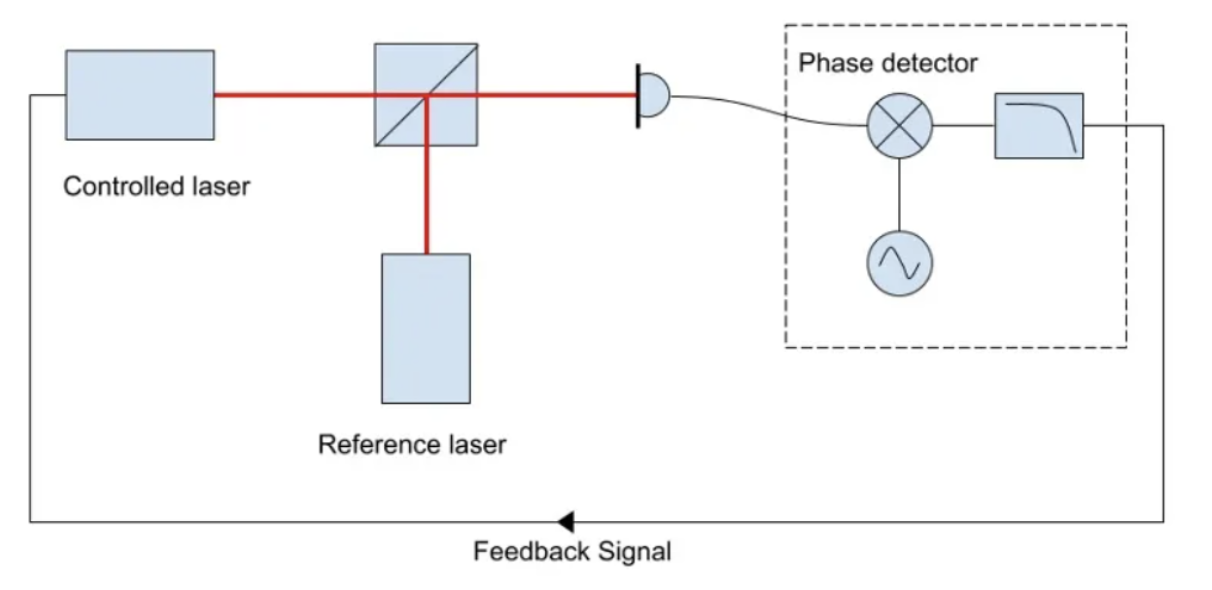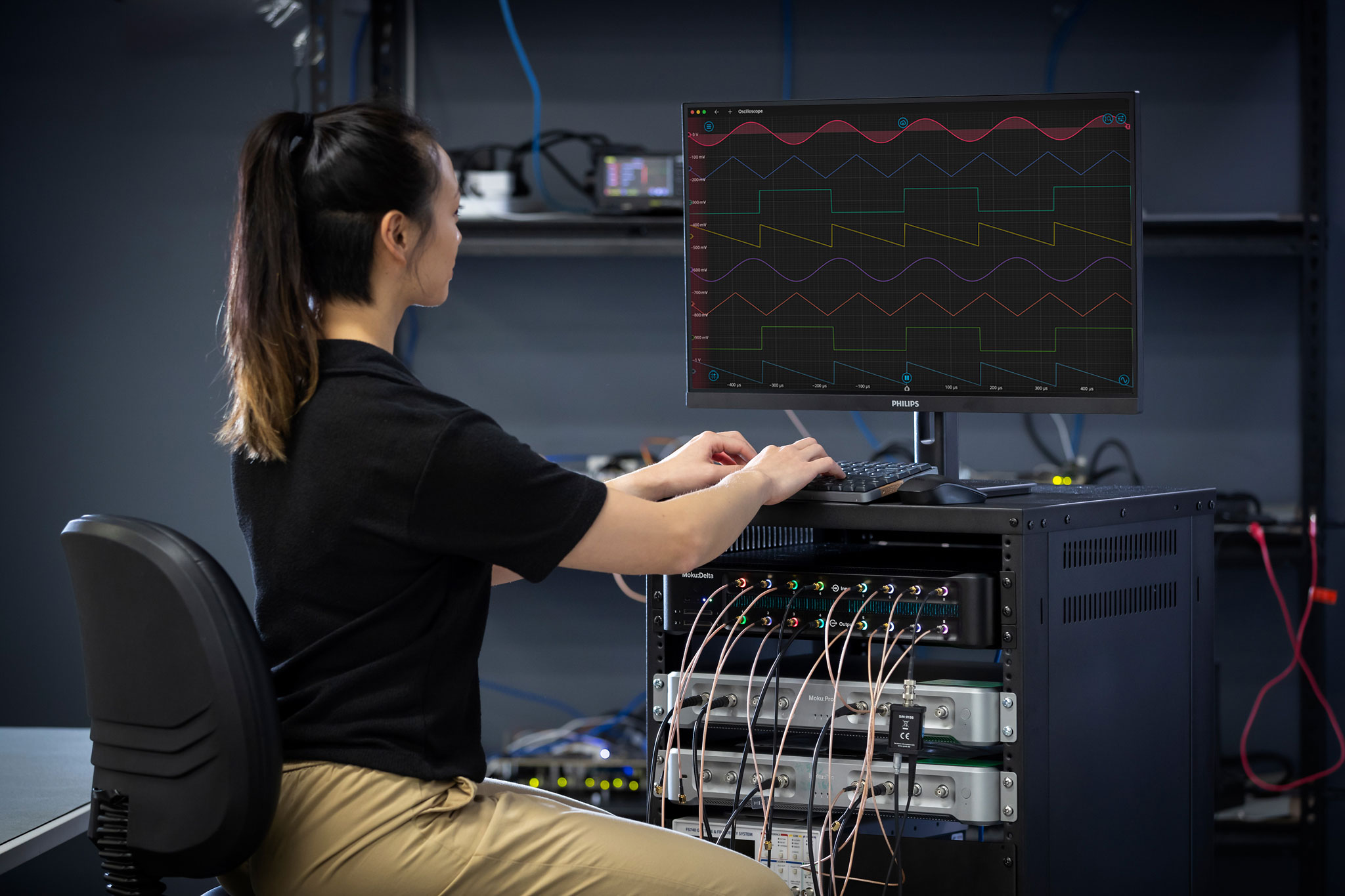What is coherent beam combination?
Coherent beam combination is a useful technique that combines high-power laser beams to obtain a single beam with preserved beam quality, increased brightness, and increased power.1 Scientists combine laser beams because the output of a single laser is limited by nonlinear effects, including but not limited to stimulated Raman scattering (SRS) in the case of fiber lasers.2 This technique allows researchers to circumvent these limitations, leading them to spatially or temporally combine multiple beams to increase average power for continuous lasers and peak power for pulsed laser systems while maintaining beam quality.3
Why do researchers use coherent beam combination?
Coherent beam combination is used for a variety of applications, such as laser-based defense, ground-to-satellite communications, power beaming, clean energy generation, materials processing, and more.4 For example, one project called Directed Propulsion for Interstellar Exploration (DEEP IN), shown in Figure 1, proposes using directed energy propulsion to explore other worlds, potentially allowing a spacecraft to travel at up to 30% of the speed of light. This would allow a 220 lb (100 kg) probe to reach Mars in just three days through photonic propulsion. Photonic propulsion utilizes coherent beam combination to fire lasers at a reflective surface acting as a solar sail, transferring a small amount of kinetic energy to the surface when they are reflected.5

Figure 1: A graphical representation of the DEEP IN probe, reproduced from NASA.gov
Understanding phase coherence
What is coherence?
Coherence describes two electromagnetic waves that have a fixed phase relationship and are “in phase.” For example, two coherent laser beams can constructively interfere with each other due to this phase relationship.6 This allows for the peak power of the laser channels to exceed what is traditionally possible with single laser sources or incoherent sources, as shown in Figure 2.7

Figure 2: Peak power comparison when laser channels are coherent (all in phase) or incoherent (out of phase).
How do you achieve coherent beam combination?
Scientists can achieve phase coherence between multiple laser beams by phase-locking them to each other using instruments such as a phasemeter. This device accurately measures the phase of a signal down to the µcycle, enabling extremely high-precision locking. Users can then choose to output signals that are phase-locked to the inputs. An instrument like a phasemeter can help scientists achieve accurate optical phase control.
Measuring and locking phase with a phasemeter
A phasemeter is an instrument that measures phase. The digitally implemented Moku Phasemeter measures phase, relative to a reference clock, of up to four input signals with better than 6 µradian precision. With built-in live graphs, you can use this versatile, FPGA-based instrument to measure coherence of input channels and view data in real time. One method of achieving phase coherence between beams can be achieved using optical phase-locking, a technique to transfer the frequency and phase characteristics from one beam to another.
To achieve phase coherence between beams, first measure the phase difference between the lasers. Next, introduce a feedback system to modify the frequency of one of the lasers to maintain a stable phase difference. A simplified optical offset phase locking system is shown in Figure 3, detailing a reference laser and controlled laser. The lasers are combined, illuminating a photodetector. This results in a signal oscillating at the difference frequency of the two lasers — a beat note.
Figure 3: A simplified optical offset phase locking system.8
In this example, the Moku Phasemeter extracts the phase information from the beat note and feeds it back to the controlled laser to remove the difference between the lasers, achieving a stable phase lock between the beams.
Conclusion
As we reach the practical limitations of laser performance, we must find ways to continue to progress. Coherent beam combination, or directed energy, allows us to surpass the performance — in terms of brightness and power — of a single laser. By using a phasemeter, scientists can measure the phase of the laser sources and effectively lock them, achieving phase coherence and allowing the beams to constructively interfere.
To learn more about the Moku Phasemeter, schedule a demo with an engineer.
More questions?
Get answers to FAQs in our Knowledge Base
If you have a question about a device feature or instrument function, check out our extensive Knowledge Base to find the answers you’re looking for. You can also quickly see popular articles and refine your search by product or topic.
Join our User Forum to stay connected
Want to request a new feature? Have a support tip to share? From use case examples to new feature announcements and more, the User Forum is your one-stop shop for product updates, as well as connection to Liquid Instruments and our global user community.
References
[1]
R. Paschotta, “Coherent Beam Combining,” Jan. 2007, doi: https://doi.org/10.61835/89t. Available: https://www.rp-photonics.com/coherent_beam_combining.html. [Accessed: May 21, 2024]
[2]
B. He et al., “High power coherent beam combination from two fiber lasers,” Optics express, vol. 14, no. 7, pp. 2721–2721, Jan. 2006, doi: https://doi.org/10.1364/oe.14.002721
[3]
A. Klenke et al., “Coherent Beam Combination of Ultrafast Fiber Lasers,” IEEE journal of selected topics in quantum electronics, vol. 24, no. 5, pp. 1–9, Sep. 2018, doi: https://doi.org/10.1109/jstqe.2018.2808540
[4]
“Coherent Beam Combining – PowerPhotonic,” Jun. 25, 2023. Available: https://www.powerphotonic.com/coherent-beam-combining/. [Accessed: May 22, 2024]
[5]
J. Bennett, “Photonic Propulsion Could Send a Spacecraft to Mars in As Little As 3 Days,” Popular Mechanics, Feb. 24, 2016. Available: https://www.popularmechanics.com/space/deep-space/a19604/nasa-physicists-say-photonic-propulsion-could-send-a-spacecraft-to-mars-in-3-days/
[6]
T. L. GmbH, “Coherence or phase balance of a laser beam,” Trotec Laser GmbH. Available: https://www.troteclaser.com/en-us/learn-support/helpcenter/coherence-or-phase-balance-laser-beam. [Accessed: May 21, 2024]
[7]
Explanation of coherent beam combination . Qinetiq. Available: https://www.qinetiq.com/-/media/1a948172dcd9419e9976e2f246a0e7fa.ashx?ver=7e99a5c1492549cb92190b5e67ea134f
[8]
“Laser Frequency Offset Locking,” Liquid Instruments, Sep. 02, 2021. Available: https://liquidinstruments.com/laser-frequency-offset-locking/. [Accessed: Jun. 11, 2024]







